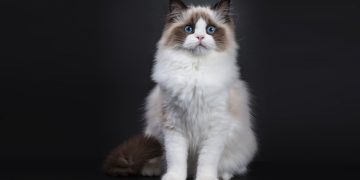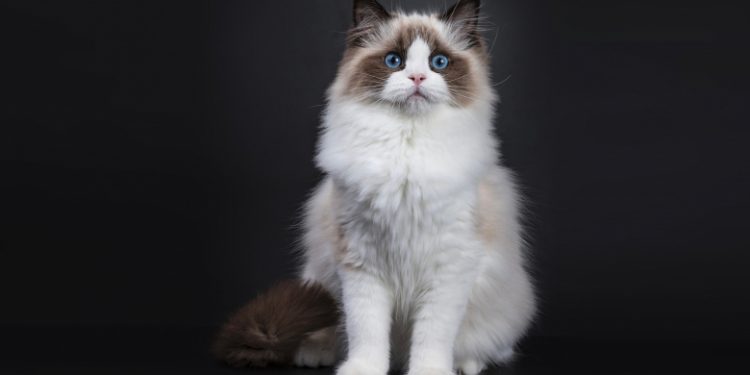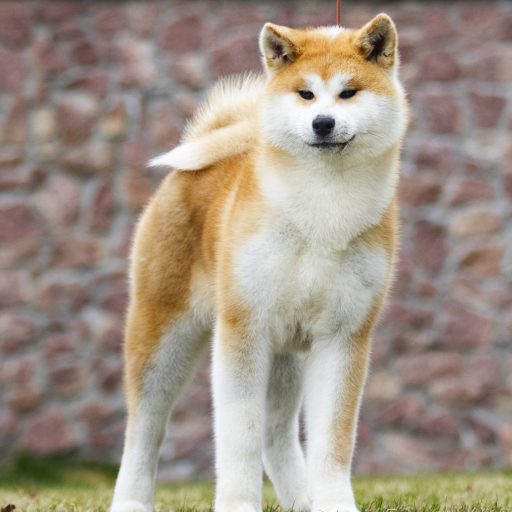A large cat, the Ragdoll is a particularly calm, patient and docile animal. It is also characterized by a tremendous adaptability that allows it to acclimatize to most lifestyles. However, he greatly prefers calm and secure environments. Never aggressive, with a legendary sweetness, the Ragdoll is a relatively recent breed that quickly became very popular, first in the United States, then with families in the rest of the world, especially in Europe. .
Breed History
It is to Ann Baker, breeder of Persian cats in Riverside, California, that we owe the creation of the Ragdoll breed in the early 1960s. She had obtained it by crossing a Persian Angora cat and a Sacred cat from Burma, thus giving birth to a companion with exceptional gentleness. Ann Baker gave her the name Ragdoll, which literally means “rag doll”.
She then registered several of her Ragdoll cats with the National Cat Fanciers’ Association. Ann Baker also ceded representatives of the new feline breed to Denny Dayton and his wife Laura. The couple also occupies a fundamental place in the development of the Ragdoll, which he continued to ensure within his famous breeding Blossom Time until the 1980s, while distancing himself from Ann Baker.
Very popular in the United States, the Ragdoll began to be recognized by various major American feline bodies during the 1970s, in particular the TICA (The International Cat Association).
The first exports then took place, first in the United Kingdom, then elsewhere in Europe, notably in France from 1986. This is the date on which Noëlle Vialatte (cattery of Gailande in the Pyrénées-Atlantiques) brought the first French Ragdolls: Barfield and Blossom of Patriarca. They sired a first litter 2 years later. Since then, the Ragdoll has gradually gained popularity in France, the LOOF (Official Book of Feline Origins) having identified more than 2,700 registrations in 2019, compared to 76 in 2003.
Physical peculiarities
Its body: of powerful, heavy and long construction, fitting into a rectangle. The neck is short and well muscled, the chest broad and rounded, the legs of medium size and robust bone.
His hair: semi-long, silky, the outer coat is well furnished and associated with an undercoat. Shorter on the front legs, longer and denser on the hind legs. The collar is particularly sought after.
Its color: the 4 main colors (or patterns) are the colorpoint, the mitted, the two-tone and the van. Body color is almost always eggshell white to milky white. In the colourpoint, the points formed by the ears, the mask, the feet and the tail are darker than the body. In the mitted, the chin has a white coloration extending via a band descending to the chest and running along the entire length of the abdomen. Ears, mask and legs (except feet) are darker. In the bicolor, the nose is pink and the points consist of the ears, the tail and the mask, which is characterized by a white mark in the shape of an inverted V. In van, the body color is white and is associated with small eggshell to milky white spots. The points are the ears, the tail and the top of the mask, the nose is pink.
His head: triangular. The contours of the head, skull and forehead are rounded. The muzzle is of medium length and well developed, the chin well marked.
Her eyes: large, oval-shaped, slightly slanted without tending towards the oriental style. The color is a very intense blue.
Its ears: moderately large, wide at their attachment, extending the triangular shape of the head and slightly pointed forwards. Their tops are rounded.
Its tail: long, wide at birth and generously covered with hair.
Feed
Because they are less active than many other cats, the Ragdoll can be prone to being overweight. This means that his diet must be adapted by avoiding too many carbohydrates and fats. It is therefore better to provide him with top-of-the-range kibble, offering him quality proteins and a complete and balanced range of nutrients. In addition, this form of dry food will help him maintain his teeth. The cat must also have fresh and regularly renewed water, at will.












